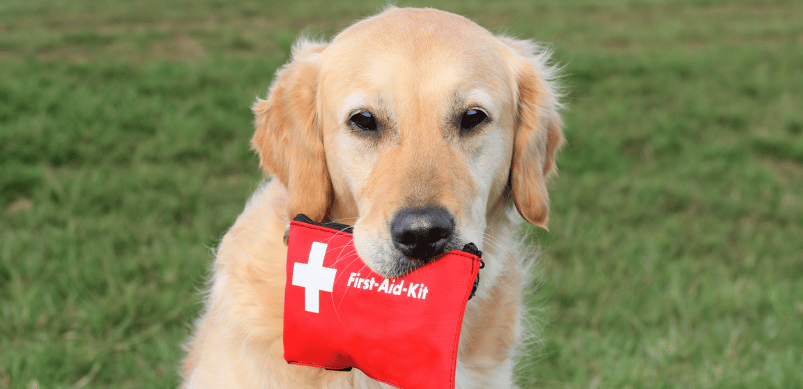Accidents and emergencies can happen in the blink of an eye – even to our beloved furry friends. Whether it’s a cut paw, a choking hazard, or something more severe like a seizure or poisoning, knowing how to respond can make a life-saving difference. That’s where pet first aid comes in.
Why First Aid for Pets Is Important
First aid is not a replacement for veterinary care, but it provides critical support until professional help is available. By knowing what to do in an emergency, you can ease your pet’s pain, prevent the situation from worsening, and even save their life.
The Golden Rules of Pet First Aid
Before jumping into action, keep these core rules in mind:
- Stay Calm: Your pet will sense your emotions. A calm demeanor helps you make better decisions and soothes your animal.
- Ensure Safety First: If your pet is in a hazardous situation (e.g., near a road or electrical wires), carefully move them to a safe area without endangering yourself.
- Muzzle if Necessary: Injured pets may bite out of fear or pain. Use a soft cloth or proper muzzle if safe to do so—never muzzle a vomiting, unconscious, or choking animal.
- Do Not Give Food or Water: Unless directed by a vet, avoid feeding your pet, especially if surgery may be needed.
- Contact a Veterinarian ASAP: Always call a vet or emergency clinic immediately after administering first aid.
Here are step-by-step instructions for some of the most frequent emergencies
Bleeding externally
- Muzzle your pet if necessary
- Apply direct pressure with a clean cloth or gauze
- If bleeding persists, wrap the wound snugly and elevate the area if possible
- Get to a vet quickly
Choking
Signs: Pawing at mouth, coughing, gagging, blue tongue
- Open the mouth carefully to see if an object is visible – do not push it deeper
- If you can safely remove the object, do so with tweezers
- If the pet is unconscious, perform the Heimlich maneuver (sharp thrusts to the abdomen)
- Rush to a vet immediately
Heatstroke
Signs: Excessive panting, drooling, red gums, vomiting, collapse
- Move the pet to a cool, shaded area
- Apply cool (not cold) water to the body and paws
- Offer small amounts of water if your pet is conscious
- Get veterinary help immediately
Poisoning
Signs: Drooling, vomiting, seizures, weakness
- Identify the toxin (label, plant, substance)
- Do not induce vomiting unless directed by a vet
- Call the Pet Poison Helpline or your vet right away
- Bring a sample of the substance or label with you to the clinic
Seizures
- Clear the area of objects that could cause injury
- Do not touch the pet’s mouth or restrain them
- Time the seizure duration
- After the seizure ends, keep your pet calm and warm
- Contact your vet for evaluation
Broken Bones
- Muzzle the pet to prevent biting
- Gently confine them to prevent further injury
- Do not attempt to set the bone
- Use a board or stretcher for transport
- Get to a vet urgently
What to Include in Your Pet First Aid Kit
Keep these items handy at all times:
- Gauze pads and bandages
- Adhesive tape
- Antiseptic wipes
- Digital thermometer (rectal use only)
- Tweezers
- Scissors
- Muzzle or soft cloth
- Hydrogen peroxide (only if advised by a vet)
- Pet-safe wound cleaner
- Emergency contact numbers
Final Thoughts
Being prepared is the best way to protect your pets. Take time to educate yourself, build a first aid kit, and consider enrolling in a pet first aid course offered by local vet clinics or animal organizations. Remember: your fast, informed response could be the difference between life and death.
Stay calm, act fast, and never hesitate to call your vet. Your pet depends on you!

